 Facebook
Facebook
 X
X
 Instagram
Instagram
 TikTok
TikTok
 Youtube
Youtube
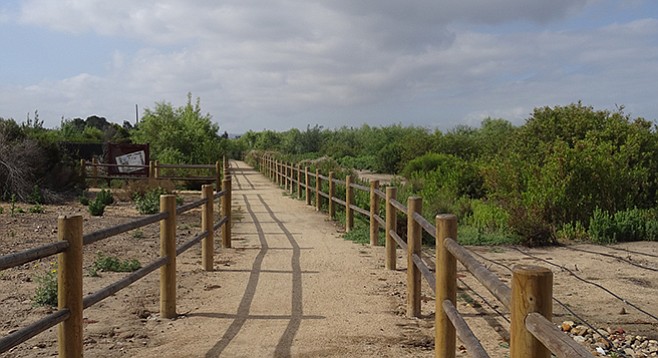
The Otay Delta Habitat Restoration Project is part of a much larger management plan to restore ecosystems and provide necessary habitat corridors for wildlife between San Diego Bay and Otay Mountain along the Otay River watershed. This former delta was fallow for over 30 years until non-native plants were removed and over 18,000 native trees, shrubs — herbaceous species and grasses — were planted in 2012 on over 55 acres. The land is now part of the U.S. Fish and Wildlife Service’s San Diego Bay National Wildlife Refuge.
Hikers, cyclists, dog walkers, and exercisers use the patchwork of trails throughout the refuge. A short stroll here is a good way to see restored riparian habitat along the lower Otay River. It also includes hiking a portion of the Otay Valley Regional Park on the south side of the river.
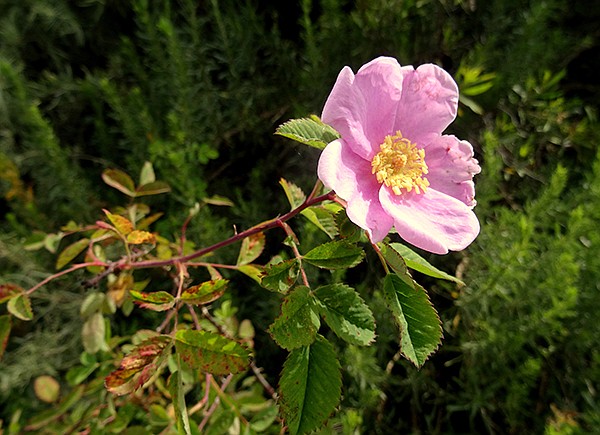
From the staging area, walk south down a well-maintained trail of decomposed granite. Native plants such as California buckwheat, mule-fat, San Diego sunflowers, and California roses abound adjacent to the fenced trail. Wild cucumber vine intertwines through the shrubs and trees with its large prickly green fruit scattered throughout the branches. Look to the right and see a wide swathe of blue elderberry trees that have been replanted in this area. Listen for bees’ busy collecting nectar and pollinating the abundant flowers of the numerous buckwheat and other plants.
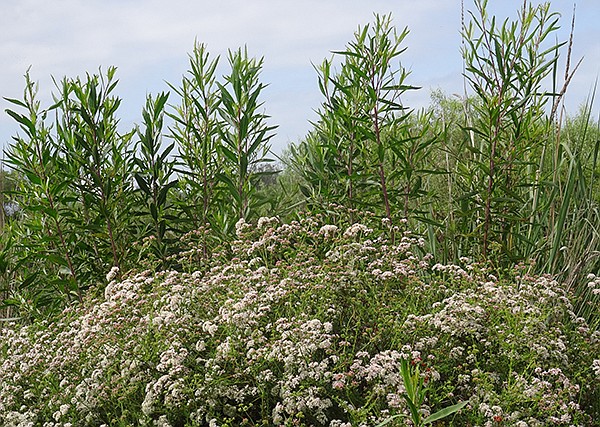
Old world honeybees may not be the pollinators in this case as native bees can be more efficient for native plants plus they have an important role in crop production, especially tomatoes! There are more than 600 species of native bees in San Diego County. Most are solitary and do not live in hives, and many are specialists that can only get their food from certain host plants. Pollen is gathered to mix with nectar for “baby food loaves.” Only the adults feed on pure nectar. When the males wander too far in their work, they sometimes have to sleep out at night (or inside a flower, such as jimson weed). Only female bees can sting.
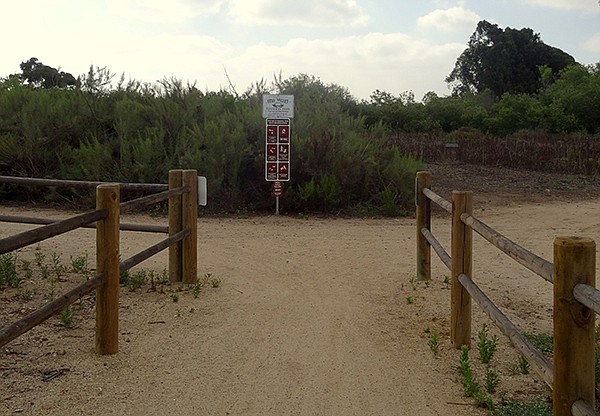
After about half a mile, a junction is reached. A left turn takes you past the Hollister and Fenton ponds to the Beyer Boulevard Ranger Station for the Otay Valley Regional Park. Turn right and head towards the Saturn Boulevard staging area, and then north on a single lane paved road. The restored habitat of native plants continues along this path, although there is evidence of non-natives with mustard, ice plant, and plumbago on the west side of the trail. Also seen in this area are salt heliotrope crawling along the ground and the prominent jimson weed with it’s large white flowers. Swallows and western bluebirds are seen amongst the numerous local and migratory birds in this area. The trail turns back east near the Bayshore Bikeway back to the starting point.
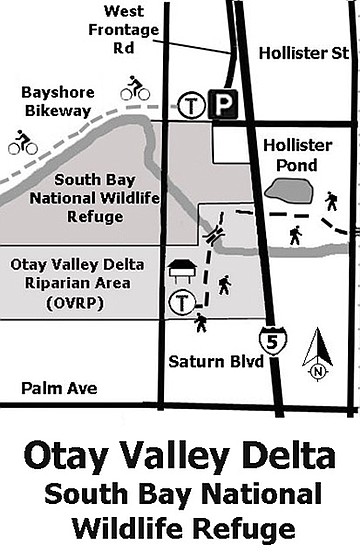
Distance from downtown San Diego: 11.5 miles. Allow 15 minutes driving time (Chula Vista). Take I-5 S and exit on Main Street. Head south 0.3 mile and park at the Swiss Park staging area.
Hiking length: 1.35-mile loop.
Difficulty: Easy. Elevation gain/loss 20 feet. Dogs (on leashes) and bicycles allowed. No facilities or water. Hours open: 7 a.m. to sunset, every day.


The Otay Delta Habitat Restoration Project is part of a much larger management plan to restore ecosystems and provide necessary habitat corridors for wildlife between San Diego Bay and Otay Mountain along the Otay River watershed. This former delta was fallow for over 30 years until non-native plants were removed and over 18,000 native trees, shrubs — herbaceous species and grasses — were planted in 2012 on over 55 acres. The land is now part of the U.S. Fish and Wildlife Service’s San Diego Bay National Wildlife Refuge.
Hikers, cyclists, dog walkers, and exercisers use the patchwork of trails throughout the refuge. A short stroll here is a good way to see restored riparian habitat along the lower Otay River. It also includes hiking a portion of the Otay Valley Regional Park on the south side of the river.

From the staging area, walk south down a well-maintained trail of decomposed granite. Native plants such as California buckwheat, mule-fat, San Diego sunflowers, and California roses abound adjacent to the fenced trail. Wild cucumber vine intertwines through the shrubs and trees with its large prickly green fruit scattered throughout the branches. Look to the right and see a wide swathe of blue elderberry trees that have been replanted in this area. Listen for bees’ busy collecting nectar and pollinating the abundant flowers of the numerous buckwheat and other plants.

Old world honeybees may not be the pollinators in this case as native bees can be more efficient for native plants plus they have an important role in crop production, especially tomatoes! There are more than 600 species of native bees in San Diego County. Most are solitary and do not live in hives, and many are specialists that can only get their food from certain host plants. Pollen is gathered to mix with nectar for “baby food loaves.” Only the adults feed on pure nectar. When the males wander too far in their work, they sometimes have to sleep out at night (or inside a flower, such as jimson weed). Only female bees can sting.

After about half a mile, a junction is reached. A left turn takes you past the Hollister and Fenton ponds to the Beyer Boulevard Ranger Station for the Otay Valley Regional Park. Turn right and head towards the Saturn Boulevard staging area, and then north on a single lane paved road. The restored habitat of native plants continues along this path, although there is evidence of non-natives with mustard, ice plant, and plumbago on the west side of the trail. Also seen in this area are salt heliotrope crawling along the ground and the prominent jimson weed with it’s large white flowers. Swallows and western bluebirds are seen amongst the numerous local and migratory birds in this area. The trail turns back east near the Bayshore Bikeway back to the starting point.

Distance from downtown San Diego: 11.5 miles. Allow 15 minutes driving time (Chula Vista). Take I-5 S and exit on Main Street. Head south 0.3 mile and park at the Swiss Park staging area.
Hiking length: 1.35-mile loop.
Difficulty: Easy. Elevation gain/loss 20 feet. Dogs (on leashes) and bicycles allowed. No facilities or water. Hours open: 7 a.m. to sunset, every day.
Comments